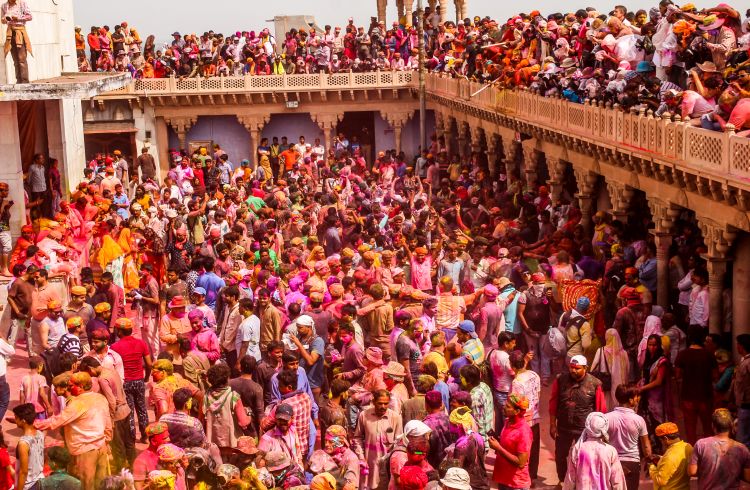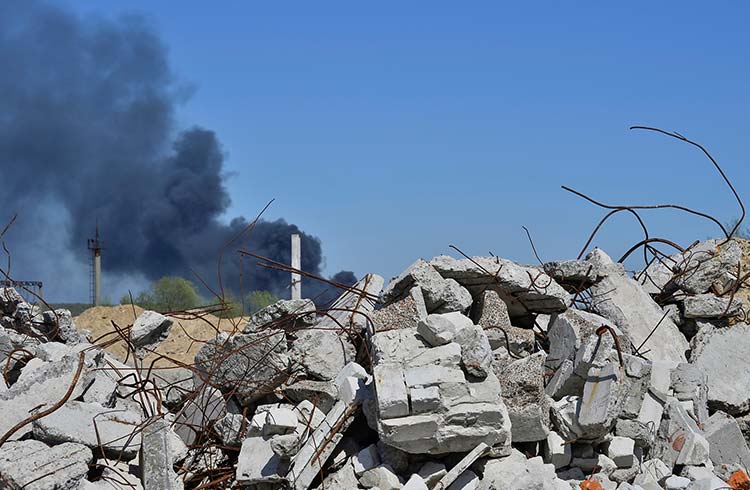How to Survive a Stampede or Crowd Crush when Traveling
What would you do at a festival or concert if there was panic in the crowd and it started moving as one? We asked a professional crowd controller for their expert survival tips.
 Photo © GettyImages/Girish Mitta
Photo © GettyImages/Girish Mitta
Festivals and concerts draw huge crowds, and are popular with travelers, giving them the motivation to visit a destination. But sometimes a crowd becomes a crush or a stampede potentially putting your life in danger. Paul Wertheimer, one of the world's leaders on crowd safety, gives his expert insight into crowd control, crowd dynamics, and staying safe.
- Notable crowd-crush events
- Crowd crush vs stampede
- Survival tips to stay safe
- How to escape a stampede
Notable crowd-crush events
On January 29, 2025, at least 30 people were killed in a crowd crush at a Maha Kumbh festival in northern India when pilgrims rushed to bathe in the sacred waters.
In July 2024, a crowd crush at a religious gathering in northern India killed 121 people, as devotees surged forward to touch the Hindu guru leading the event.
On 29 October 2022, a crowd crush, during a Halloween celebration in the Itaewon district of Seoul, South Korea, left 159 people dead and 196 injured.
In June 2017, a firecracker sparked panic in Turin's main square as 30,000 fans watched Juventus play a European Champions soccer match. The stampede that followed caused more than 1,500 injuries.
And in September 2015, around 2,400 Hajj pilgrims were crushed or trampled in Mina, Saudi Arabia, as crowds converged at a narrow intersection leading to a bridge.
Most of these tragedies have a few elements in common: a bottleneck that prevented people from entering or exiting, poor crowd control, and overcrowding.
Crowd crush vs stampede
There are differences between a crush and a stampede.
According to Paul, what happened in India was not a stampede. "A stampede is when people or animals are fleeing a perceived danger. They're running from something that scares them. This was a crowd craze… a movement of people towards something of perceived value."
The critical error in the 2024 event was underestimating the crowd size. Organizers had planned for 80,000 participants, but more than 250,000 turned up, leaving crowd control efforts and infrastructure woefully inadequate.
In Seoul, the number of police assigned to the event was far too low for the size of the crowd.
"There's always this perception that if people had just acted rationally they wouldn't have been crushed to death. Panic didn't cause this, the failure to manage this event caused this," said Paul.
Survival tips to stay safe
Whether it's a stampede or a crush, here are some tips for increasing your chances of survival.
Paul advises you should take a moment to make a mental note of all the exits in a venue as soon as you arrive. The natural urge is to use the same entry when you exit, not because it's safer, but it's familiar. He also adds there may be an alternative exit being used by fewer people that will get you out more quickly – very handy if you already know where it is.
"When you start to feel uncomfortable in a crowd, this is the time to start looking at leaving. This is very difficult because, if you've traveled a long distance, or you've waited for a long time, for example in front of a stage, you don't want to leave."
Many people leave that decision until it's too late, and find they are trapped in a large, swaying and shuffling crowd. Paul says, in his experience, crowds tend NOT to panic, they tend to be heroic and compassionate.
Here are Paul's survival tips:
- Stay on your feet
- Conserve energy – don't push against the crowd and don't yell or scream
- Use sign language to communicate with those around you (point, wave, even use your eyes)
- Keep your hands up by your chest, like a boxer – it allows you movement and protects your chest
- If you're in danger, ask people to crowd-surf you out
- If someone extends their hand for help, grab hold to keep them up
How to escape a stampede
Paul has developed a technique for getting out of a crush called the accordion method:
"After you're pushed forward, like in a wave, there's a lull. That lull is your chance to move, and the way you move is on a diagonal, between pockets of people. There's always space between people. A couple of steps sideways, another wave surge, then another couple of steps in the next lull. You work your way out that way till you get to the periphery."



No Comments